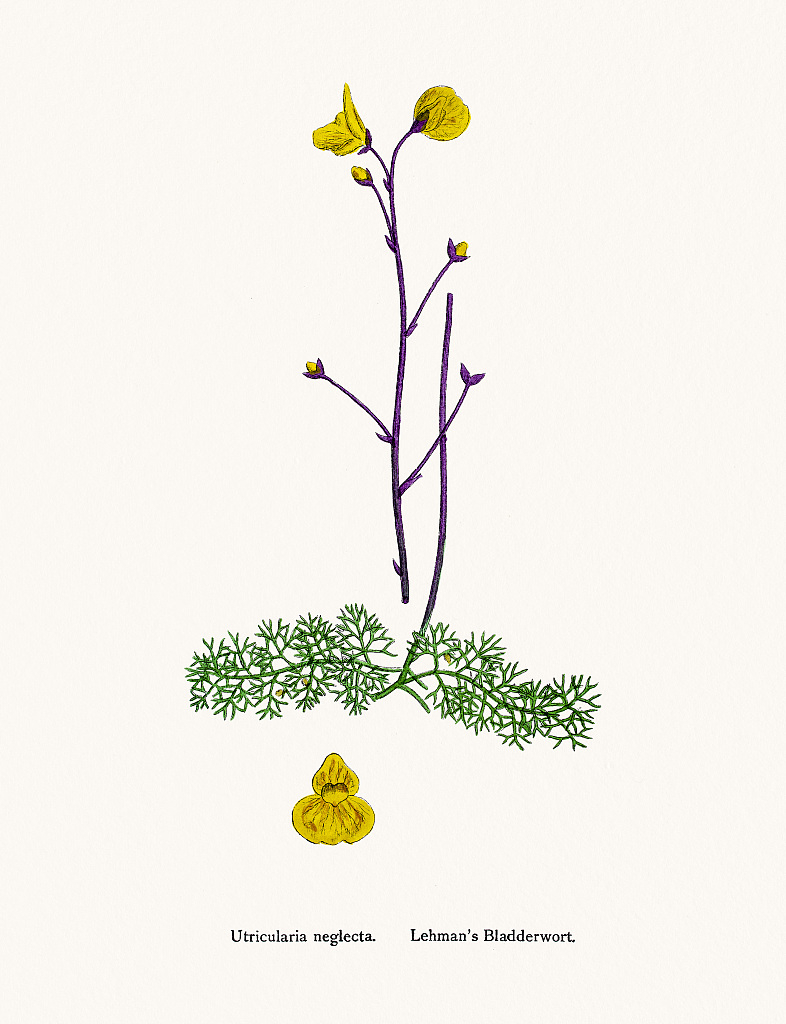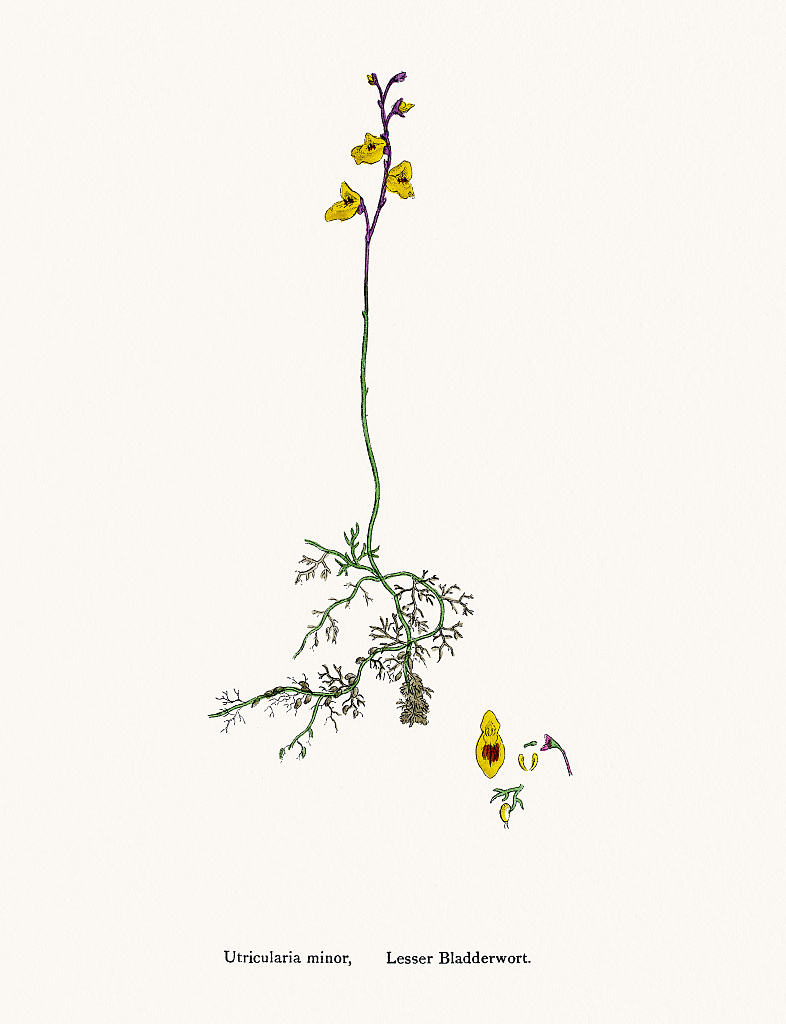
Plant
15:48, 29-Apr-2019
Carnivorous Plant: The plant with vacuum power
By Ding Qian

In our previous articles, we introduced some amazing carnivorous plants such as Nepenthes, Butterwort, and Sundew. Today, we are going to learn about another interesting carnivorous plant called Bladderwort, a genus that consists of more than 200 species.

Illustration of Intermediate Bladderwort. /VCG Photo
Illustration of Intermediate Bladderwort. /VCG Photo
Like other carnivorous plants, the bladderwort needs to obtain extra nutrition through eating insects. They usually occur in fresh water and wet soil across the globe except Antarctica.
The plant doesn't have roots, instead it has a horizontal floating stem. The hollow bladders, or traps, grow along the stem underwater. The traps are only 0.2 mm to 1.2 cm but are quite sophisticated.

Illustration of Lehman's Bladderwort. /VCG Photo
Illustration of Lehman's Bladderwort. /VCG Photo
When an insect touches the trigger hair connected to the valve, the trap opens and sucks the insect inside with a fast and strong inflow of water.
The prey usually includes protozoa and water fleas. After the insect is digested, the trapdoor reopens.

Illustration of Lesser Bladderwort. /VCG Photo
Illustration of Lesser Bladderwort. /VCG Photo
The bladderwort has very beautiful flowers which are two mm to 10 cm wide. The lower petals are a lot larger than the upper ones. They can be of many colors as well. Sanderson's Bladderwort is a species in the bladderwort family, it's known for its flowers which look like rabbit ears. The lovely plant has been a favorite of many gardeners.
Eighty-percent of bladderworts are terrestrial and around 20 percent are aquatic. Besides its horticulture value, the plant is also used to treat kidney stones and other diseases.
About Carnivorous Plant series:
At this year's International Horticultural Exposition, there is a special zone in the Plant Pavilion for various carnivorous plants. These plants prey on insects or small animals for extra nutrition that they cannot get simply from the soil, water, and sunlight. In this series, we are going to present to you the most typical carnivorous plants.
(Cover images via VCG)
(If you want to contribute and have specific expertise, please contact us at nature@cgtn.com.)

SITEMAP
Copyright © 2018 CGTN. Beijing ICP prepared NO.16065310-3
Copyright © 2018 CGTN. Beijing ICP prepared NO.16065310-3